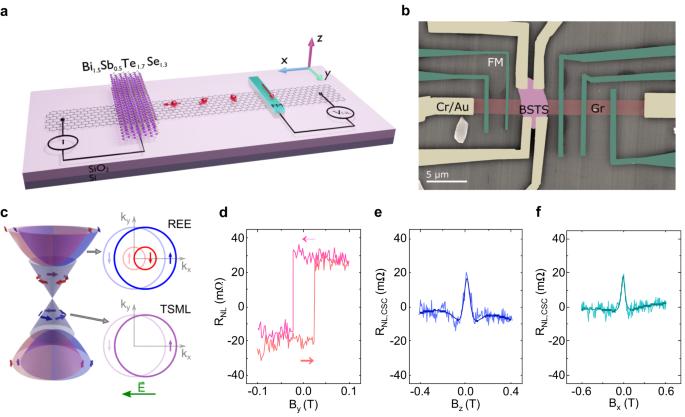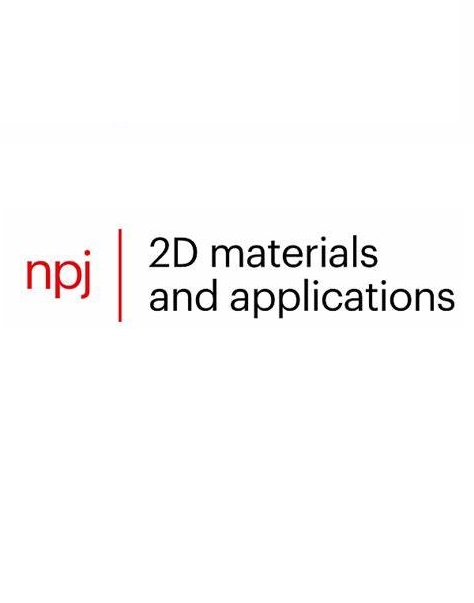Room temperature nonlocal detection of charge-spin interconversion in a topological insulator
IF 8.8
2区 材料科学
Q1 MATERIALS SCIENCE, MULTIDISCIPLINARY
引用次数: 0
Abstract
Topological insulators (TIs) are emerging materials for next-generation low-power nanoelectronic and spintronic device applications. TIs possess non-trivial spin-momentum locking features in the topological surface states in addition to the spin-Hall effect (SHE), and Rashba states due to high spin-orbit coupling (SOC) properties. These phenomena are vital for observing the charge-spin conversion (CSC) processes for spin-based memory, logic and quantum technologies. Although CSC has been observed in TIs by potentiometric measurements, reliable nonlocal detection has so far been limited to cryogenic temperatures up to T = 15 K. Here, we report nonlocal detection of CSC and its inverse effect in the TI compound Bi1.5Sb0.5Te1.7Se1.3 at room temperature using a van der Waals heterostructure with a graphene spin-valve device. The lateral nonlocal device design with graphene allows observation of both spin-switch and Hanle spin precession signals for generation, injection and detection of spin currents by the TI. Detailed bias- and gate-dependent measurements in different geometries prove the robustness of the CSC effects in the TI. These findings demonstrate the possibility of using topological materials to make all-electrical room-temperature spintronic devices.

拓扑绝缘体中电荷-自旋互转的室温非局域探测
拓扑绝缘体(TIs)是下一代低功耗纳米电子和自旋电子器件应用的新兴材料。除了自旋霍尔效应(SHE)和高自旋轨道耦合(SOC)特性导致的拉什巴状态外,拓扑绝缘体的表面态还具有非三重自旋动量锁定特性。这些现象对于观察基于自旋的存储器、逻辑和量子技术的电荷-自旋转换(CSC)过程至关重要。这里,我们报告了在室温条件下,利用带有石墨烯自旋阀器件的范德华异质结构,在 TI 化合物 Bi1.5Sb0.5Te1.7Se1.3 中对 CSC 及其反向效应的非局部探测。利用石墨烯的横向非局部器件设计,可以观察到自旋开关和汉乐自旋前驱信号,从而通过 TI 产生、注入和检测自旋电流。在不同几何结构中进行的偏置和栅极依赖性详细测量证明了 TI 中 CSC 效应的稳健性。这些发现证明了使用拓扑材料制造全电室温自旋电子器件的可能性。
本文章由计算机程序翻译,如有差异,请以英文原文为准。
求助全文
约1分钟内获得全文
求助全文
来源期刊

npj 2D Materials and Applications
Engineering-Mechanics of Materials
CiteScore
14.50
自引率
2.10%
发文量
80
审稿时长
15 weeks
期刊介绍:
npj 2D Materials and Applications publishes papers on the fundamental behavior, synthesis, properties and applications of existing and emerging 2D materials. By selecting papers with the potential for impact, the journal aims to facilitate the transfer of the research of 2D materials into wide-ranging applications.
 求助内容:
求助内容: 应助结果提醒方式:
应助结果提醒方式:


